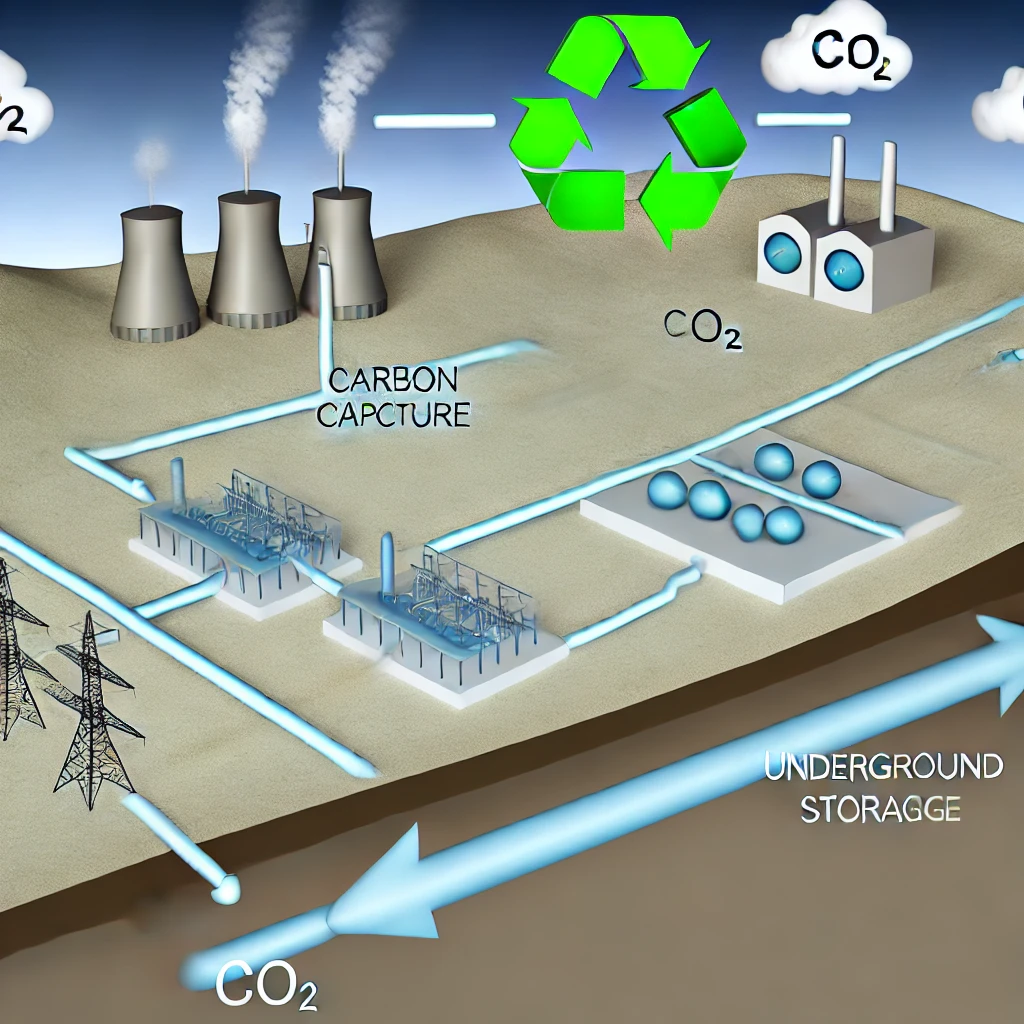As the global community intensifies its efforts to combat climate change, carbon capture technologies have emerged as a critical component in reducing greenhouse gas emissions. With worldwide emissions continuing to rise, the economic and business dimensions of carbon capture are gaining increasing significance.
According to the International Energy Agency (IEA), the global capacity of carbon capture, utilization, and storage (CCUS) facilities increased by 33% in 2021 alone. Valued at approximately USD 2 billion in 2020, the market is projected to grow to USD 7 billion by 2027, expanding at a compound annual growth rate (CAGR) of 19.5%.
With this article, let us deep dive into the market size and growth potential, business models, investment trends, and socio-economic impacts of carbon capture, enriched with relevant facts and data.
The market for carbon capture is rapidly expanding, driven by the urgent need to mitigate climate change. Global commitments to achieve net-zero emissions by mid-century necessitate the widespread adoption of carbon capture technologies. Technological advancements, such as more efficient solvents and membranes, are reducing costs and enhancing efficiency, making CCUS more viable. Supportive policies and incentives, like the U.S. 45Q tax credit, are further promoting investment in CCUS projects. The IEA projects that to meet international climate targets, the global CCUS capacity needs to increase to around 5.6 gigatonnes of CO2 annually by 2050.
Let us further understand the growth potential with the help of Norway’s Longship Project case study. Norway’s Longship project, launched in 2020, exemplifies the significant growth potential of the CCUS market. With a government investment of USD 2.7 billion, Longship aims to capture and store up to 1.5 million tonnes of CO2 annually from industrial sources in Norway and Europe by 2024. This large-scale project underscores the substantial market opportunities and the role of government support in advancing CCUS technologies.
Business Models in Carbon Capture
With the evolution of the concept of carbon capture and its usage worldwide, multiple business models are emerging, each tailored to different aspects of the value chain. Some of these business models are:
a. Capture as a Service (CaaS) is an innovative model in which companies offer carbon capture services to industries, charging fees based on the amount of CO2 captured. This model is particularly attractive for industries that lack the expertise or capital to implement CCUS independently.
b. Integrated CCUS Operations: This model involves companies managing the entire CCUS process, from capture to storage or utilization. It benefits from economies of scale and offers comprehensive solutions to clients.
c. The Carbon Credits and Trading model: in this model, the firms capture CO2 and sell carbon credits in voluntary or compliance markets. This approach capitalizes on the growing demand for carbon credits as companies strive to meet emissions targets.
d. Utilization-Based Models: such models focus on using captured CO2 to create value-added products such as synthetic fuels, chemicals, or building materials. This approach not only reduces emissions but also generates additional revenue streams.

Here, I would like to explain the business model usage with the help of a case study of the Carbon Clean Solutions Company. Carbon Clean Solutions is a UK-based company that exemplifies the CaaS model by partnering with industrial clients to provide end-to-end carbon capture solutions, including installation, operation, and maintenance. Their modular technology significantly reduces capture costs, making it accessible to a broader range of industries.
Investment Trends and Opportunities
After having an understanding of the market trends and the various business models, it is necessary to understand the level of investments made in the area of carbon capture technology with an overall understanding of the kind of opportunities that such investments lead to for companies worldwide. It is well-known that the investment in carbon capture technologies is surging, driven by the urgent need for scalable solutions to address climate change. In 2021, global investments in CCUS reached USD 3 billion, with substantial funding from both public and private sectors. Some of the key investments trends followed globally are as follows:
- Venture Capital and Private Equity: There is increasing interest from venture capital and private equity firms in innovative carbon capture startups. For instance, Climeworks, a Swiss direct air capture company, raised USD 100 million in 2020 to scale up its operations.
- Government Funding: Governments are providing substantial funding through grants, loans, and tax incentives to accelerate the deployment of CCUS technologies. The U.S. Department of Energy announced USD 2.5 billion in funding for CCUS projects over the next decade.
- Corporate Investments: Major corporations, particularly in the energy and industrial sectors, are investing in CCUS projects to meet their sustainability goals. ExxonMobil has committed USD 3 billion through 2025 to develop lower-emission energy solutions, with a significant portion allocated to CCUS projects.
Maintaining the line of the investment trends , let us understand what ExxonMobil did for investmensts in the carbon capture technology. ExxonMobil’s commitment to lower-emission energy solutions includes plans to invest USD 3 billion through 2025, with a significant portion allocated to CCUS projects. The LaBarge facility in Wyoming, which captures approximately 7 million tonnes of CO2 annually, exemplifies the scale of corporate investment in carbon capture.

With a huge investment opportuinities in the carbon capture technology, there grew an immense job creation market, that contributes immensely to the socio-economic development of a region leading to the growth worldwide. The deployment of carbon capture technologies offers significant socio-economic benefits, including job creation and regional economic development. The Global CCS Institute estimates that CCUS could create over 100,000 jobs globally by 2050. Some of the vital areas for job creartion are:
- Construction and Engineering: Building and maintaining CCUS facilities require skilled workers in construction, engineering, and project management.
- Operations and Maintenance: Long-term operation and maintenance of CCUS plants create sustained employment opportunities.
- Research and Development: Advancements in carbon capture technology drive demand for scientists, engineers, and researchers.
These areas of job creation had an immense scope for socio-economic development that helped the CCUS projects to often stimulate economic activity in the regions where facilities are located, contributing to local development and infrastructure improvements. For example, the Northern Lights project in Norway is expected to create over 1,500 jobs during its construction phase.
Another aspect was industraial competitiveness wherein just by reducing emissions, CCUS helped industries comply with regulations and avoid carbon taxes, enhancing their global competitiveness.
Finally, it led to multiple environmental Benefits by significantly reduceing the greenhouse gas (GHG) emissions, contributing to environmental sustainability.
I have an important project as a case study to mention, the one of the Petra Nova Project in Texas. The Petra Nova project in Texas, the world’s largest post-combustion carbon capture facility, captures 1.4 million tonnes of CO2 annually from a coal-fired power plant. The project has created hundreds of jobs in construction, operations, and maintenance, demonstrating the socio-economic benefits of large-scale CCUS initiatives.
Thus all the above discussions clearly explains that the economic and business dimensions of carbon capture present vast and promising opportunities. As the market continues to grow, diverse business models emerge, investments surge, and the socio-economic benefits become increasingly apparent. By understanding these dimensions and leveraging insights from case studies, stakeholders can navigate the evolving carbon capture landscape with greater confidence and clarity.
The integration of carbon capture technologies is not just a theoretical possibility but a tangible reality, driving us closer to a sustainable and low-carbon future. The question remains: can we harness the full potential of these technologies to meet our climate goals? The answer lies in our collective commitment and innovative spirit, ensuring that carbon capture becomes a cornerstone of global efforts to combat climate change.



